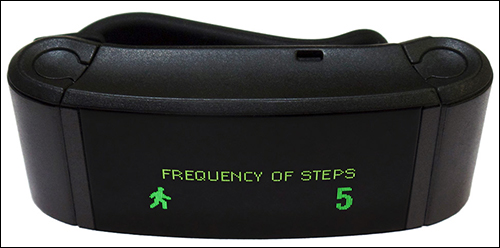At the Healthcare Information and Management Systems Society Conference (HIMSS), a health-care IT industry conference held this week in Las Vegas, health insurance provider UnitedHealthcare shared details on Tuesday about UnitedHealthcare Motion, the firm’s wellness program for employee-sponsored health plans with high deductibles. The program incents participants to meet daily fitness goals by offering them micropayments that are deposited into a heath savings account (HSA) linked to their health plan. Activity data is transmitted to UnitedHealthcare via a wearable activity tracker, which the insurer provides.
UnitedHealthcare partnered with Qualcomm Life, a subsidiary of Qualcomm, to design and implement the program. Qualcomm Life’s mission is to provide connectivity and data-management solutions for health-care applications. James Mault, Qualcomm Life’s VP and chief medical officer, says UnitedHealthcare has taken a rigorous approach to deploying the Motion program in order to ensure the insights it could glean from the wearable provide real value to the payer as well as the patient.
“The current retail wearable counts steps and calculates calories burned,” Mault says, “but it does not correlate [that data] to a demonstrable health outcome that can be validated against claims data.” Without that level of information, he says, an insurer cannot draw links between the insured’s activities and the cost of his or her health care. But after years of research and development, in which the insurer’s mathematicians and data scientists collaborated with wireless health-care system designers at Qualcomm Life, UnitedHealthcare has developed a program that it believes will benefit both itself and its customers.
According to Mault, the wearable device issued to Motion program participants “generates a set of data that is able to see the actual physical exertion of each individual and their activity, as well as their body mass, muscle mass and physical stature.” Mault declines to disclose the exact mix of sensors contained in the customized wearable, which is manufactured by Trio Motion but which runs a proprietary set of algorithms co-developed by UnitedHealthcare and Qualcomm Life.
The wearable device transmits data via an embedded Bluetooth radio to the UnitedHealthcare Motion mobile app running on a user’s mobile phone or tablet (it downloads passively, whenever the wearable is within Bluetooth range). The phone or tablet then uploads that data, via a cellular or Wi-Fi network connection, to Qualcomm Life’s 2net Mobility platform, which is HIPPA-certified and also supports other wireless health applications, such as those focusing on in-care monitoring for seniors.
UnitedHealthcare receives the participant’s activity data and adds funds to his or her HSA accordingly. Spouses can also receive an activity tracker. The milestones are structured so that they can be met throughout the week—such as walking 300 steps (or an equivalent activity) in five-minute increments for a total of six times. “This isn’t just a casual walk around the office,” Mault says. But choosing stairs over an elevator, or a vigorous walk to and from lunch, could work. Other milestones are based on 30-minute intervals of intense activity, such as playing tennis or running.
The most HSA credit one can earn is $4 per day, or $1,460 per year. But with a spouse also using the tracker and logging daily exercise, that total can reach $2,920 annually. For employees of companies that offer high-deductible policies, Mault notes, those funds can significantly alleviate out-of-pocket health-care expenses.

The wellness program and related fitness trackers are initially being offered to companies with 101 to 300 employees.
The insurer already has 100,000 individuals enrolled in the Motion program, which has been established in 12 states and in Washington, D.C. (each state insurance board must certify the program independently, Mault explains). UnitedHealthcare plans to deploy the program nationwide.
In addition, Mault reports, UnitedHealthcare and Qualcomm Life are collaborating on a number of other products focused on boosting healthy lifestyles through the use of wireless health devices. “We’re just getting started,” he says.

